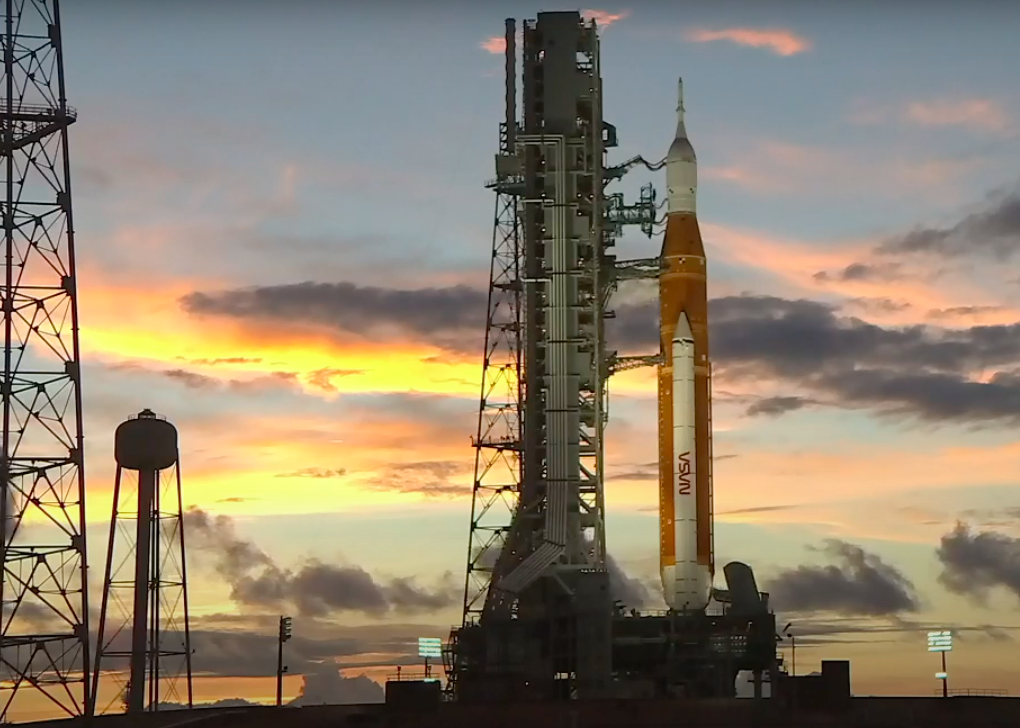
CAPE CANAVERAL — The countdown for NASA’s first Space Launch System (SLS) rocket went into an unplanned hold at the T-minus-40 min. mark to allow the Kennedy Space Center launch team time to work through a problem to thermally condition the vehicle’s engines for flights.
NASA was aiming to launch the SLS and Orion spacecraft at 8:33 a.m. EDT on Aug. 29. The launch window extends to 10:33 a.m.
The rocket’s core stage was successfully filled with cryogenic liquid oxygen and liquid hydrogen on Aug. 29, following resolution of a potential hydrogen leak in the tail service mast umbilical, located at the base of the core stage.
The new issue surfaced at around 3:15 a.m. while the launch team was conducting a procedure to thermally condition the SLS core stage engines for flight. The procedure, known as hydrogen kick-start, increases pressure on the core stage tanks so that they bleed off some liquid hydrogen to the engines and chill them to the proper temperature for ignition.
NASA had hoped to test the procedure during its June 20 practice countdown but was stymied by a hydrogen leak that forced an early end to the wet dress rehearsal. The SLS and Orion spacecraft were returned to the Vehicle Assembly Building for repairs and final launch preparations.
The bleed or reverse flow worked as intended with three of the four core-stage RS-25 engines, prompting a round of troubleshooting. The bleed pressure within the SLS hydrogen propellant tank was increased and recycled and a flow valve closed in efforts to address the concern with the affected engine, but without success. Finally, the circulation of the liquid hydrogen used to thermally condition all four of the engines was channeled into the problem engine, No. 3, also unsuccessfully.
The launch control team also assessed an apparent crack along a SLS core stage flange, a connection joint linking the liquid hydrogen and oxygen tanks where a line of frost had formed. Engineers concluded the crack was in the exterior insulating foam, formed when the air around the crack was exposed to the cold temperatures on the exposed exterior of the tank.
NASA's Mission Management Team cleared the launch team to begin propellant loading shortly before midnight, starting first with the preparations to begin the loading of liquid oxygen then liquid hydrogen propellants. Fueling, however, was delayed nearly an hour due to storms off the coast of the Kennedy Space Center launch site.


